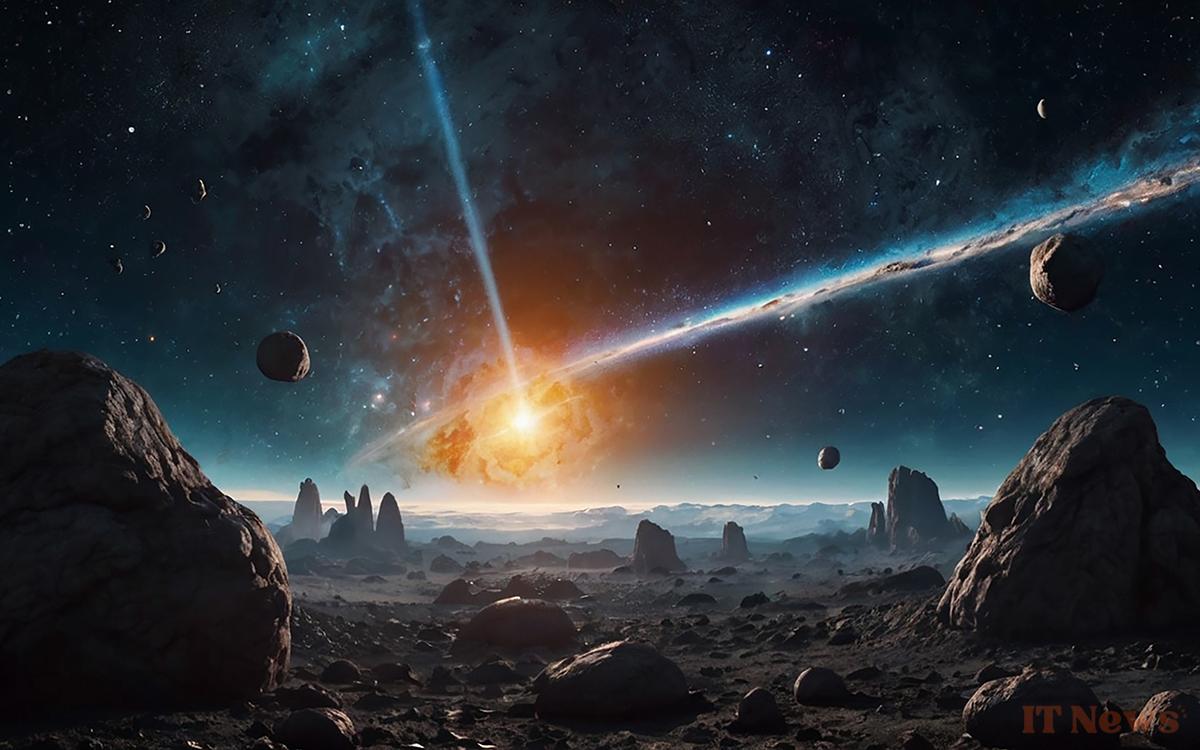The potential discovery of signs of extraterrestrial life has sparked passions. But according to several scientists, we must remain very cautious and consider all possibilities. Even that of a mistake.
On April 17, 2025, an announcement that is making the rounds worldwide also appears in our columns: signs of extraterrestrial life have reportedly been found. The team of astronomers led by Nikku Madhusudhan, who conducted the associated study, says they have found abundant dimethyl sulfide (DMS) in the atmosphere of K2-18b, a star located 120 light-years from Earth. Since DMS is produced almost exclusively by life forms such as marine algae, researchers believe it is a biosignature showing that there is, or has been, life on this planet. For Madhusudhan, these are the first signs we have of a potentially inhabited alien world. This is a revolutionary moment. Indeed, the discovery changes everything. If it is true. Now that the wind has died down, the scientific community is getting back to what it does systematically: checking the accuracy of the results presented in order to determine whether or not they can be trusted. Several points already tarnish the picture.
Scientists call for caution before claiming that extraterrestrial life has been found
It is noted that the margin of statistical error is too high in the cited study. In this case, there is a 0.3% chance that the discovery was due to mathematical chance. This is very low, but it should be noted that the standard set is much lower: 0.00003%, no more.
Read also – This is the only human-made object to have left our solar system and it carries a crucial message for aliens
Then, some findings are surprising. For example, no trace of ethane was detected alongside DMS. However, Assistant Professor of Astrobiology Eddie Schwieterman explains that given the UV radiation from K2-18b's host star, there should be abundant production of this hydrocarbon. Two possible explanations: either our model for understanding planetary atmospheres is wrong, or there is no DMS on the planet studied.
Finally, several researchers have pointed to what they call a “statistical hack.” Madhusudhan and his associates have apparently constructed a selective model where DMS and its cousin molecule DMDS are the way to explain half of K2-18b's atmospheric light spectrum. In short: they would have artificially increased the importance of these molecules.
Precedents that call for the greatest caution
Beyond these considerations, it is important to remember that Nikku Madhusudhan and his team are not at their first attempt. In 2021, they suggested that, given its atmospheric composition, K2-18b might harbor a warm ocean. As proof, they say they detected CO2 in the planet's atmosphere. Except that more recently, research has called this carbon dioxide detection into question.
Read also – The biggest explosions in the universe reveal that the largest known structure is even larger and closer to us
The same thing happened in 2023. That year, Madhusudhan said he possibly detected DMS on K2-18b. But no independent analysis of his results has confirmed this. This is also why the scientist reportedly changed his method for his latest study, claiming that this time it would be more accurate.
So we have to take this “revolution” with a grain of salt. At our current level of knowledge, some even think that DMS could be produced by something other than life. For Eddie Schwieterman, “the discovery of life outside the solar system will not be a one-off detection. Along the way, we should expect a few false alarms, and this could be one of them.”
Source: Space





0 Comments